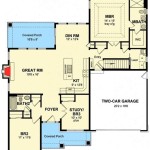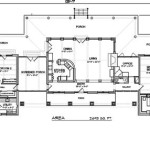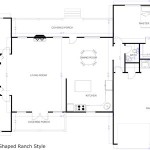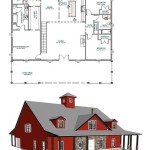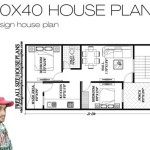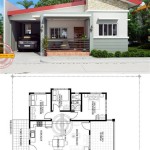Simple One Storey House Plans
One-story houses offer a plethora of advantages, ranging from ease of accessibility to reduced construction costs. Many people favor these homes due to their compact, convenient, and efficient design. If you're in the market for a simple yet stylish one-storey house, this article will present you with a comprehensive guide to help you create your dream home. Read on to explore various floor plans, architectural styles, and essential considerations for designing a one-storey house.
Floor Plans for One-Storey Houses
The floor plan serves as the blueprint for your home, determining the arrangement of rooms, hallways, and other spaces. Here are some popular floor plans for one-storey houses:
- Single-Level Floor Plan: A simple and straightforward option, where all rooms are located on a single level.
- L-Shaped Floor Plan: Provides additional privacy and separation between the living and sleeping areas, with the house forming an L-shape.
- U-Shaped Floor Plan: Encloses a central courtyard or outdoor space, creating a sense of privacy and seclusion.
- Open Floor Plan: Characterized by a spacious, open living area that combines the kitchen, dining room, and living room into one cohesive space.
Architectural Styles for One-Storey Houses
The architectural style of your home will greatly influence its overall aesthetic. Here are some popular architectural styles for one-storey houses:
- Modern: Clean lines, geometric shapes, and large windows create a contemporary and minimalist look.
- Traditional: Reflects classic architectural elements, such as pitched roofs, brick or stone facades, and symmetrical designs.
- Ranch: Originating in the American West, ranch homes feature long, low-profile buildings with open floor plans and large windows.
- Craftsman: Emphasizes natural materials, such as wood and stone, with exposed beams and intricate woodwork.
Essential Considerations for Designing a One-Storey House
When designing your one-storey house, keep the following key factors in mind:
- Functionality: The layout and design should optimize space utilization and ensure a smooth flow of movement throughout the house.
- Accessibility: Consider the needs of all occupants, including those with mobility limitations, by incorporating wide doorways, ramps, and accessible features.
- Natural Light: Maximize natural light by incorporating large windows and skylights, creating a bright and airy interior.
- Energy Efficiency: Implement energy-efficient measures, such as insulation, energy-efficient appliances, and solar panels, to reduce energy costs.
- Outdoor Space: Include outdoor living areas, such as patios, decks, or courtyards, to extend the living space and connect with the outdoors.
Conclusion
Designing a simple one-storey house requires careful planning and attention to detail. By considering the principles outlined in this article, you can create a home that meets your needs and reflects your personal style. Remember to prioritize functionality, accessibility, energy efficiency, and aesthetic appeal to achieve the perfect one-storey house for you and your family.

Tiny House Plans And Small 1 Story Below 1000 Sq Ft

Simple One Bedroom House

Single Story Pinoy House Plan Floor Area 90 Square Meters

Beautiful Tiny House Plan Ideas For Your Inspiration

Small Simple And Efficient Custom Home Designs Allows Your House Plans To Suit Needs Perfectly

Simple Low Budget Contemporary House Plans And Modern

Small House Plans 5x6 M Hip Roof One Bedroom Full

Simple One Story House Plan 80631pm Architectural Designs Plans

Simple One Bedroom House

V 386 Simple Tiny House Plan Modern 3 Bedroom 2 Bath With Two Car Port One Story Bungalow Blueprints Floor Ranch

